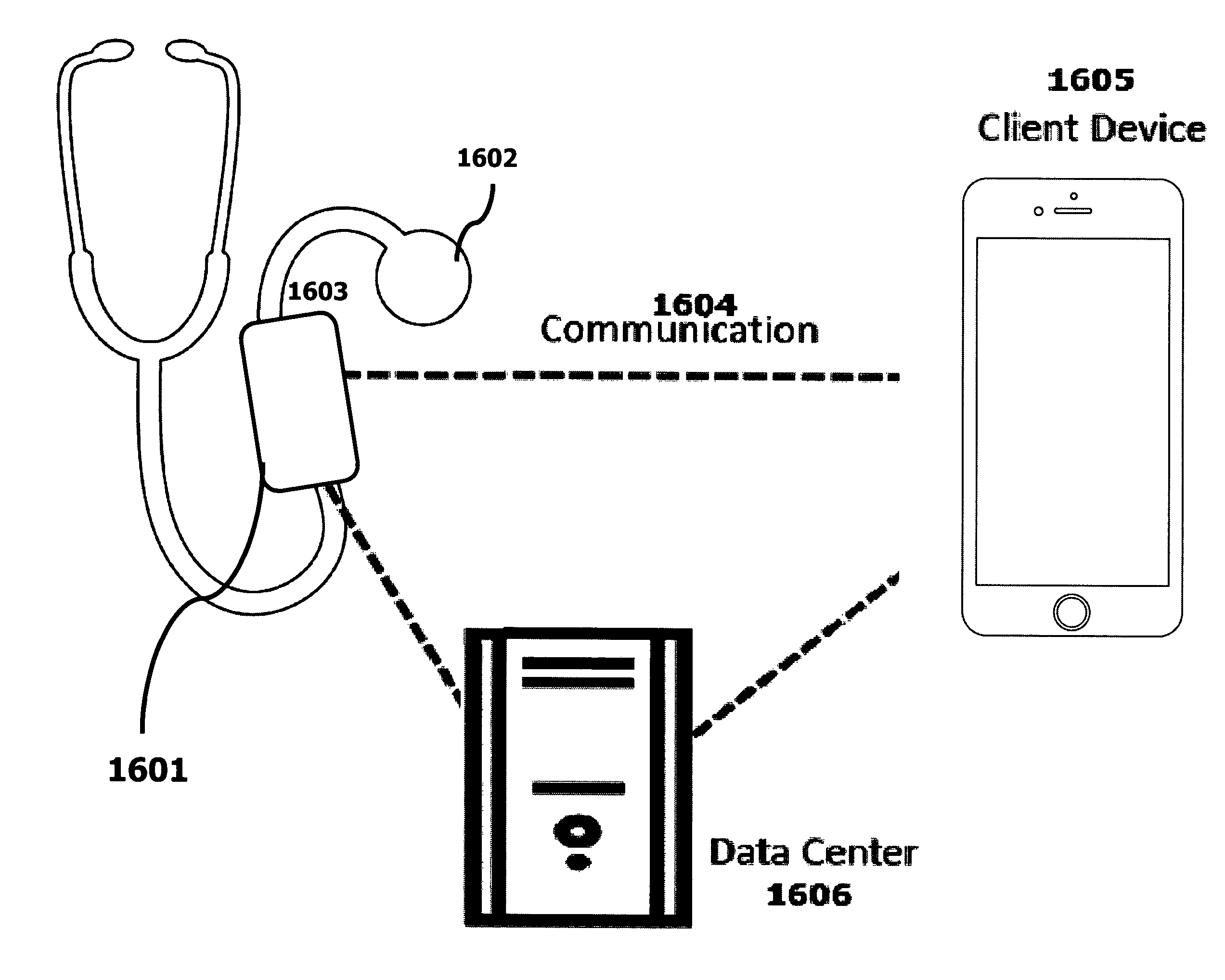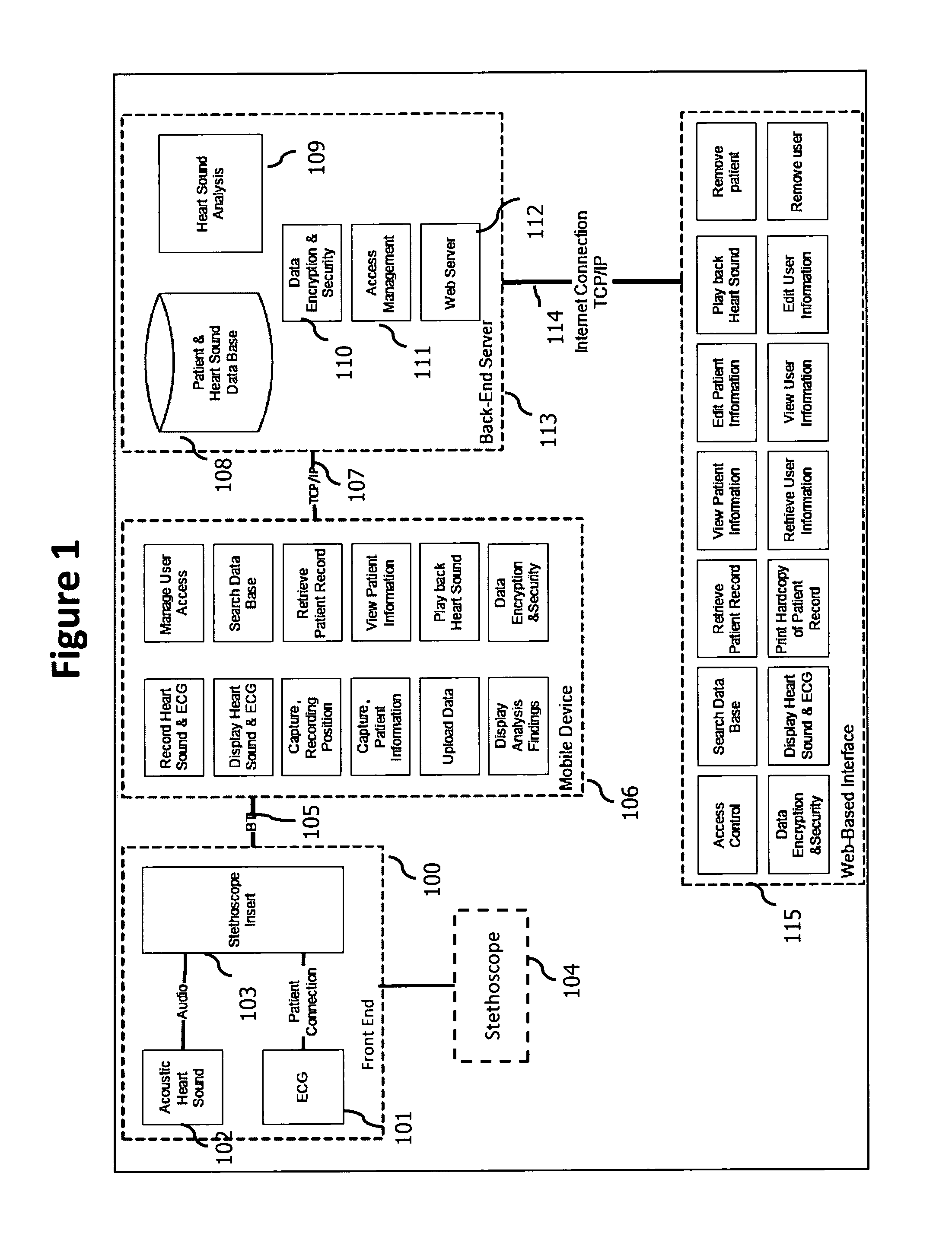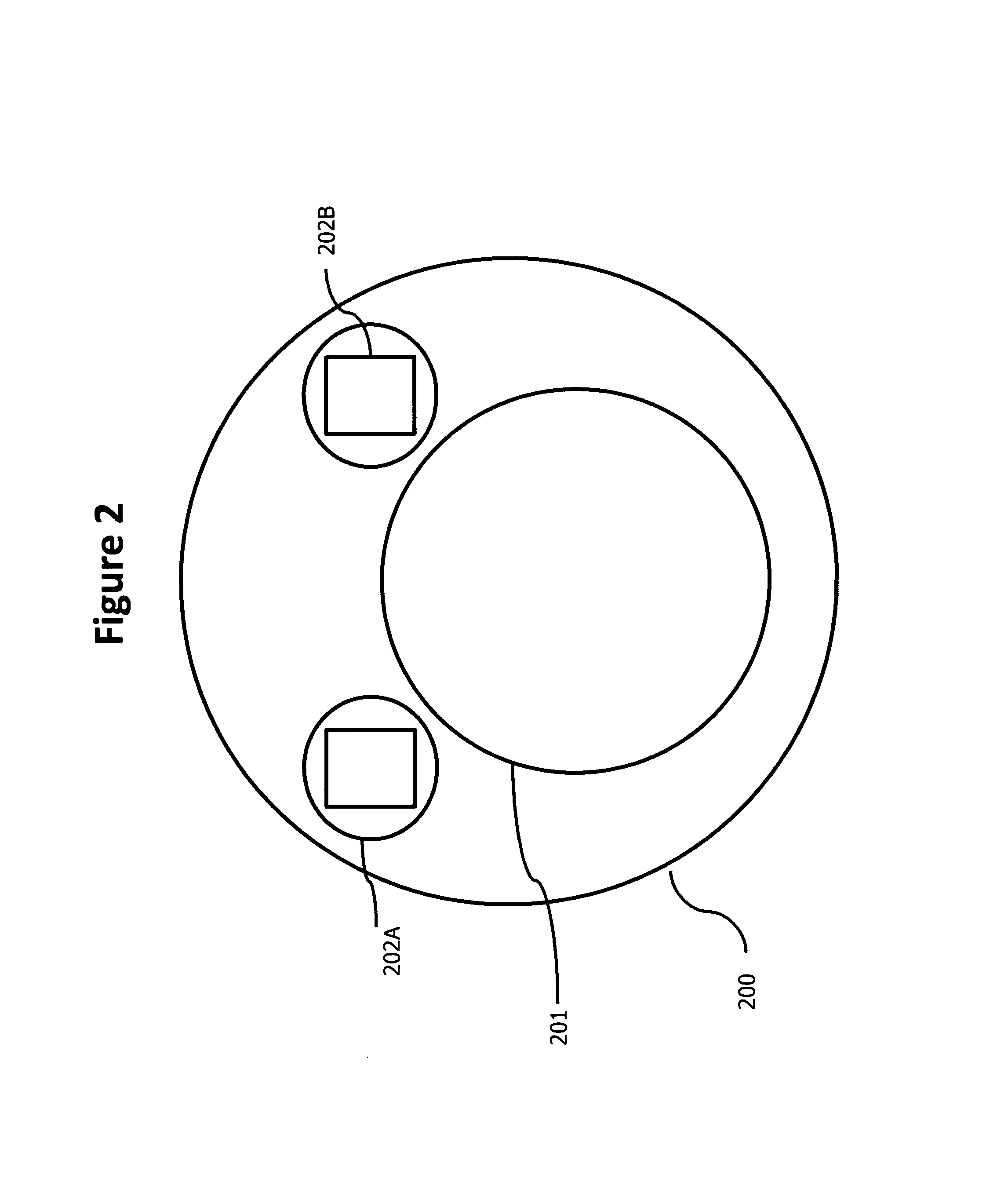Biometric front-end recorder system
a front-end recorder and biometric technology, applied in the field of medical devices, can solve the problems of difficult recognition and timing of abnormal sounds, use of conventional stethoscopes, and difficulty in detecting and assessing the intensity of soft sounds, so as to achieve the effect of convenient installation and removal
- Summary
- Abstract
- Description
- Claims
- Application Information
AI Technical Summary
Benefits of technology
Problems solved by technology
Method used
Image
Examples
Embodiment Construction
[0033]The inventive system, in accordance to FIG. 1, consists of a stethoscope front-end recorder device 100 (also referred to as stethoscope recorder device or Sleeve) with a Bluetooth interface 105 connected to a standard acoustic stethoscope 104, a mobile device 106 with software component running on it, interfacing the stethoscope recorder device and a back-end server 113, with the capability to capture and save patient information to the backend server 113, as well as receiving analysis results and accessing stored patient information from the back-end server 113. A data processing unit on a back-end server 113 analyzes 109 the heart sound and ECG signal for pathological murmurs or only recording the ECG signal. The backend server 113 contains an encrypted database 108 for storing patient information. It also contains a web-server 112 and interface 115 for a user(s) to securely access patient data.
[0034]The sleeve interfaces with an acoustic stethoscope 114 and records both the...
PUM
 Login to View More
Login to View More Abstract
Description
Claims
Application Information
 Login to View More
Login to View More - R&D
- Intellectual Property
- Life Sciences
- Materials
- Tech Scout
- Unparalleled Data Quality
- Higher Quality Content
- 60% Fewer Hallucinations
Browse by: Latest US Patents, China's latest patents, Technical Efficacy Thesaurus, Application Domain, Technology Topic, Popular Technical Reports.
© 2025 PatSnap. All rights reserved.Legal|Privacy policy|Modern Slavery Act Transparency Statement|Sitemap|About US| Contact US: help@patsnap.com



